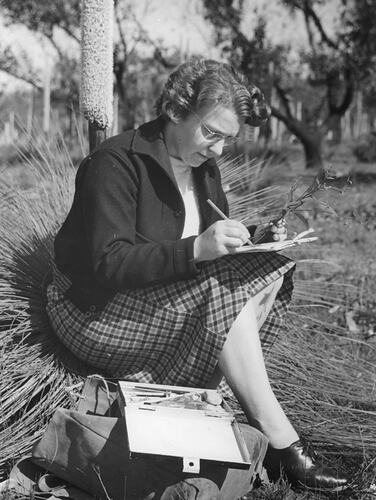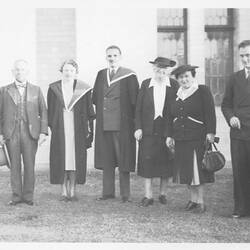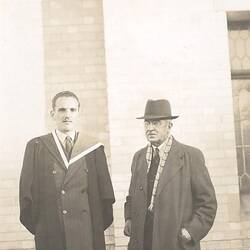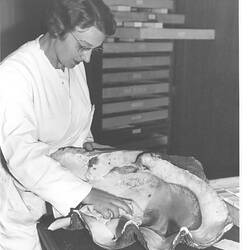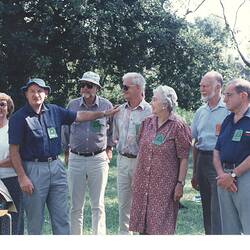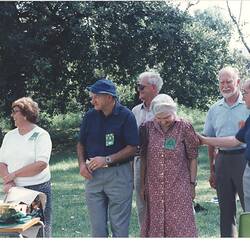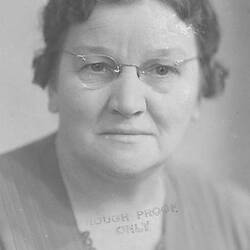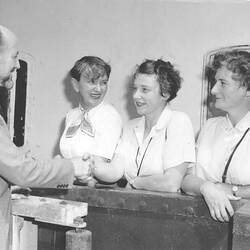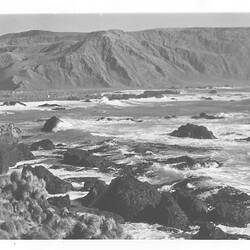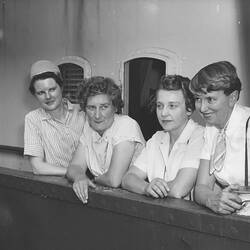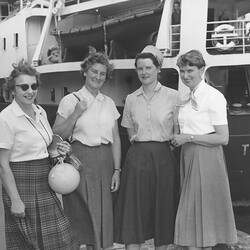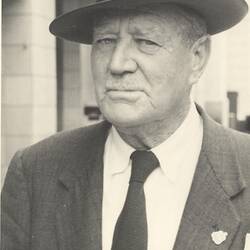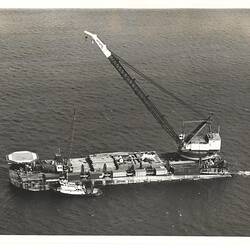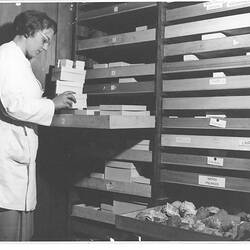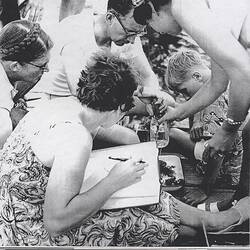Jessie Hope Black (nee Macpherson), Curator of Molluscs, achieved many 'firsts' during her long career, and made a lasting contribution in the fields of Malacology, Marine Biology and their application to environmental management. She was a mentor for many women following in these fields and an inspiration to many people.
In 1946 Jessie Hope Black (nee Macpherson) became the first woman to be appointed a Curator at the National Museum of Victoria in its then almost 90 year history. Hope had begun her scientific career as a museum assistant in 1937. Having applied for a job in Taxidermy the director at the time John Mahoney counselled her on the 'inappropriateness' of a woman in such a role and suggested they would find her something else. She spent her early days at the Museum under the financial support of the Carnegie Corporation developing and preparing new display cases and the ground breaking McCoy Hall dioramas.
Promoted to Curator of Molluscs in 1946 after completing a Science Degree part time at Melbourne University, she continued in this role until 1965, when she was required to resign from the Victorian public service as a result of the prohibition on the employment of married women known as the Marriage bar. After leaving the Museum Hope retrained as a science teacher, spending 13 rewarding years teaching in Victorian country high schools, her career providing an example to girls of the opportunities for them in science.
In 1947 Hope was part of the Museum team which used pack horses to survey the Snowy River Gorge, prior to dam construction and water diversion of the Snowy Mountain Hydroelectric Scheme. Hope also led the Museum's participation in ground-breaking marine biological surveys of Port Phillip Bay from 1957-1963. The baseline data provided by the Port Phillip Bay Survey is still in use today by environmental scientists, managers and planners, providing a benchmark against which to monitor environmental changes.
In conjunction with the Country Roads Board, CSIRO and Australian Paper Manufacturers she investigated the impact of the shipworm Teredo, (a marine bivalve mollusc which bores into wooden structures including bridges), in eastern Victoria and South Australia. She also undertook a survey of the edible molluscs in Victoria to determine the quantities of various species and the feasibility of the establishment of commercial fisheries.
Hope was a member of first group of four women to travel to Antarctica as part of an Australian National Antarctic Research Expedition (ANARE) to Macquarie Island in 1959.
She co-authored, with C. J. Gabriel, Marine Molluscs of Victoria published in 1962, still widely used as the reference work on this topic. She was a consulting malacologist to the National Science Foundation of the Philadelphia Academy of Natural Sciences, USA.
Hope was a pioneer in her desire to involve the broader community in the life of the Museum, both through her education work with the Blind Institute, planning and supervising a biology course for blind children at the Museum, for which she was made a Life Governor of the Royal Victorian Institute for the Blind. She further included the community with the establishment of a volunteer programme utilising groups such as the Marine Study Group of Victoria and the Underwater Explorers and Photographers Club. These programs engaged volunteers to assist in the labour-intensive activities of sorting, documenting and analysing specimens and data from the museum research collections. To this day volunteers continue to be extensively involved in museum activities.
Unrelated to her work in science Hope was an active advocate for services for the disabled. Over many years she supported groups with her considerable administrative ability to lobby for suitable independent housing for the disabled.
More Information
-
Keywords
-
Localities
-
Authors
-
Article types
